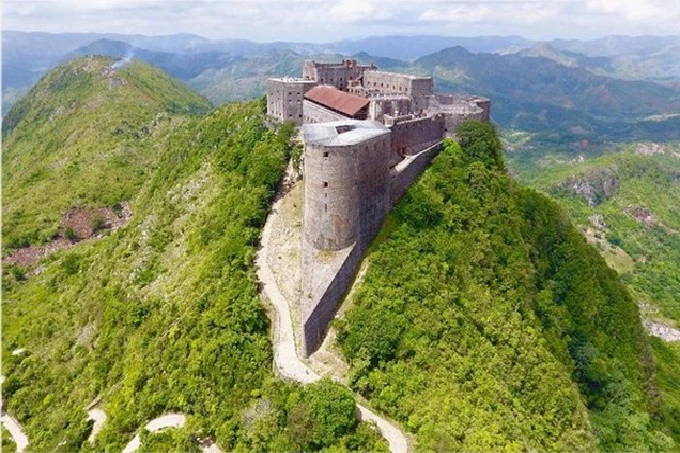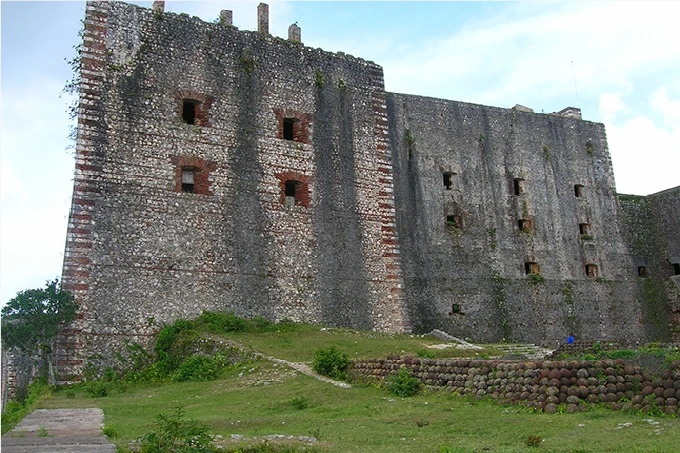Citadelle Laferrière: Why an African fortress is regarded invincible in the New World

War makes great art. The pretentious proponents of “peace may challenge the truth of this statement. But, the greatest, most emblematic creations are born of hardship. Perhaps the most notable aspect in this regard has always been architecture. In northern Haiti, at the very top of MountBonnet à l’Evêque, there is an unusual fortress, the largest in the New World. The Laferrière Citadel is the only military fortification of African origin here. It symbolizes the indestructibility of the Caribbean country, having witnessed the only successful slave revolt in history.
An extraordinary revolution and its inglorious end
Construction of the fortress began in 1805. It lasted a decade and a half. Henri Christophe designed this magnificent architectural creation. He was a general in the rebel army in Haiti. The revolution that took place here was the only successful slave uprising in human history. The Haitians gained their independence from France, which had enslaved them. The citadel of Laferrière was intended as a defense against a possible French invasion.
It so happened that there was an irreconcilable struggle for power within the revolutionary milieu. One of Christophe’s comrades-in-arms, the revolutionary Alexandre Pétion, was unhappy with his colleague’s policies. This led to a split and the secession of the north of the country. Henri Christophe proclaimed himself King Henry in 1811.
Two dozen thousand former slaves built the fortress he designed. The work was so hard that about two thousand died. The citadel was erected on top as an observation point. All the surrounding valleys and coastline were visible from here. After construction was completed, the fortress was equipped with nearly four hundred cannons of various sizes. They were left on the island after the Europeans. Giant stocks of cannonballs, which were neatly stacked in huge pyramidal piles, lie around the impregnable walls today.

In the event of a French attack, the newfound king intended to burn all the vegetation along the coastline. Thus destroying all the crops and food supplies. They would retreat to the fortress along the only mountain road. France never attacked Haiti, but the Haitians attacked the fortress and the self-proclaimed monarch. The fact is that Christophe had become such a bloody despot that he was worse to his countrymen than the French.
The king surrounded himself with the same newfangled princes, counts and marquesses, oppressing the people. During the attack of the brutalized people, the autocrat shot himself. King Henry shot himself in the chest with a silver bullet. Christophe’s supporters buried his body somewhere in the castle. They feared that the remains would be desecrated. The mystery of his tomb is still unsolved.

A citadel that never fulfilled its purpose
The fortress is of colossal proportions. Its design is as impressive as it is imposing. This majestic architectural creation rises to a height of up to four dozen meters and covers a vast area of one dozen squares. Every aspect of the great fort demonstrates an element of defensive strategy and the flowering of architectural innovation of the time. The citadel contained living quarters, water cisterns, and storage rooms. Everything was designed to provide drink and sustenance for 5,000 defenders for a year. There are also underground shelters, baths, and large bread ovens.
The huge stones that serve as foundations lie directly on the rock. The Haitians used a mixture of slaked lime, molasses, animal blood, and cow’s hooves boiled down to a sticky paste to bind the blocks together. From the road, the formidable structure looks like the prow of a huge stone ship projecting over a hillside. Each side of the fortress is unique-it is not a box-shaped castle. Its structure is deliberately so angular and irregular, for it is designed to repel cannonballs in the event of an attack. The rear of the citadel is a classic cylindrical shaft with a curved wall designed to stop the enemy attack and prevent the wall from scaling.
The side walls are designed to go straight into the steep mountainside, making an attack from such an angle virtually impossible. But the really impressive feature is the front wall facing the road – sharp and triangular as if piercing the mountainside like a spearhead. It presents an impossible task of assault for would-be attackers.
The location is strategically important – high mountain peaks have always been considered ideal for defense. In Haiti, however, it is a matter of paramount importance because it is an island. Fortresses on the shore would be too vulnerable and could become easy prey for the enemy when attacked from the sea. Unfortunately, the majestic citadel of Laferrière was never destined to fulfill its potential as a defensive structure. The French army never returned to enslave the rebellious Haitian people. In 1842 the fortress was badly damaged by an earthquake.
Haiti’s most popular attraction

Now the impressive structure is not in use. It is a very popular tourist attraction in Haiti, its symbol and an official UNESCO World Heritage Site. The cannons of the citadel are silent, but the walls still stand proudly. It would help if you overcame a difficult path to get to the top, where the fortress stands. Only part of it can be passed off-road, and then either on foot or horseback. You need to take a decent supply of water with you. Most of the citadel is available for walking. You can walk its majestic walls by climbing the many stairs. From there, you can proudly look around and imagine yourself for a moment as a soldier defending an impregnable fort.




